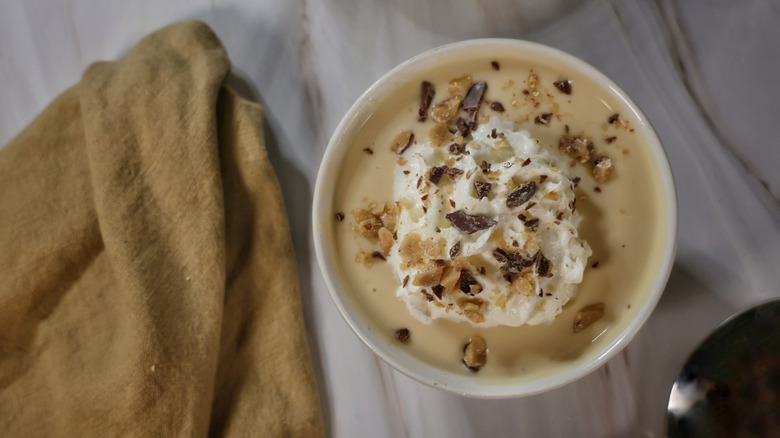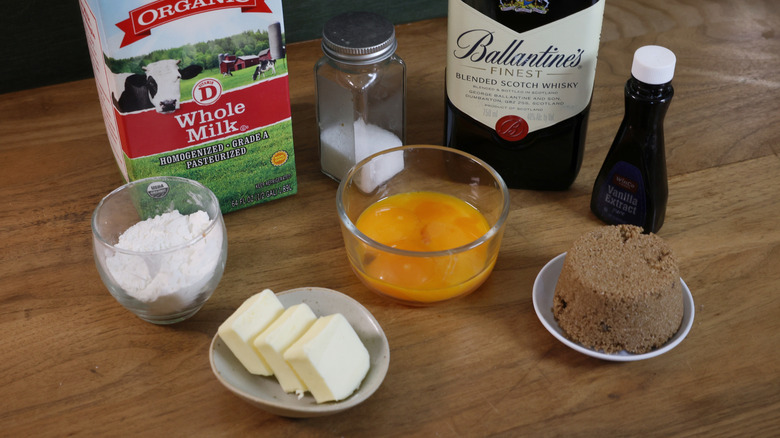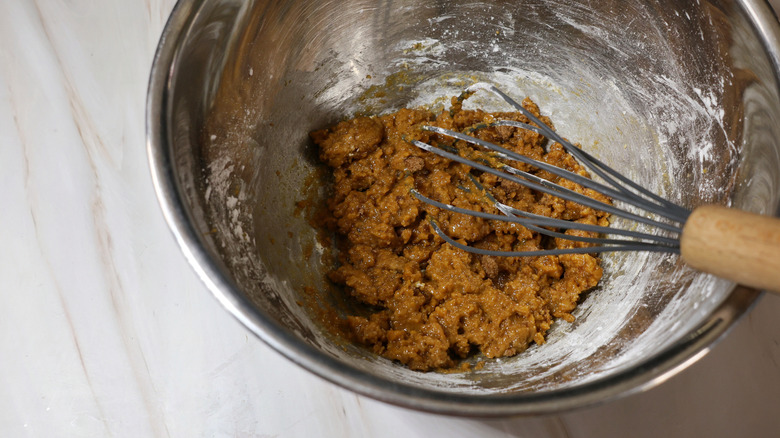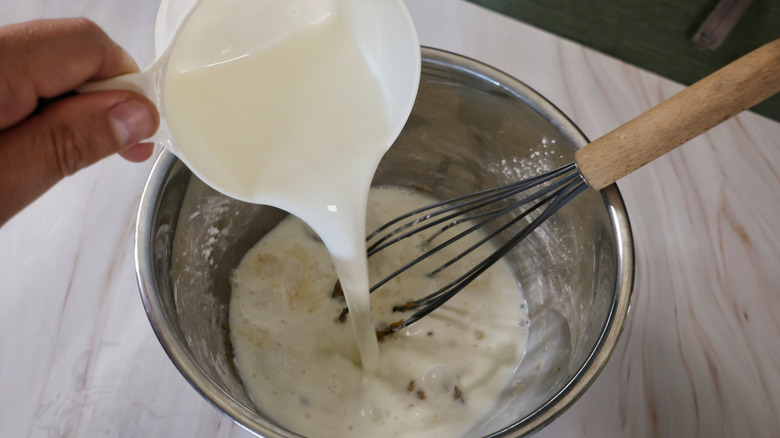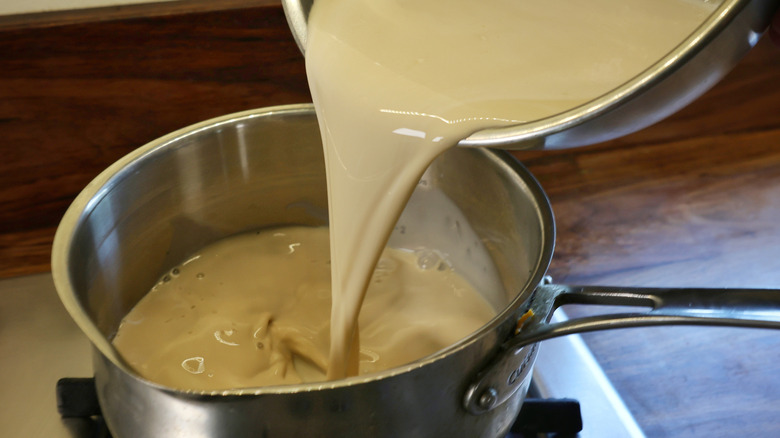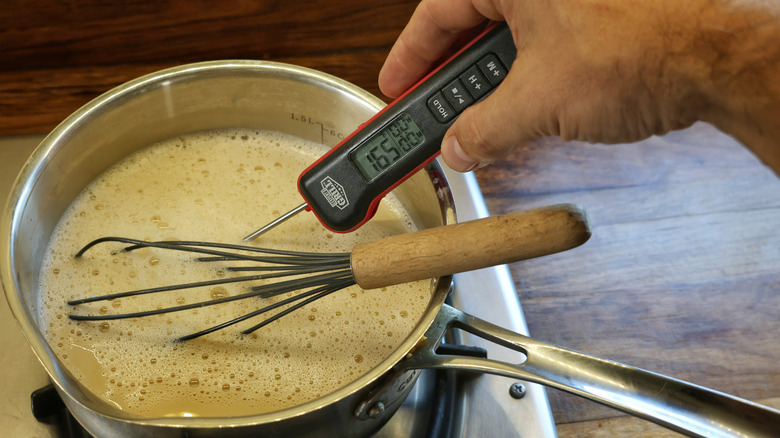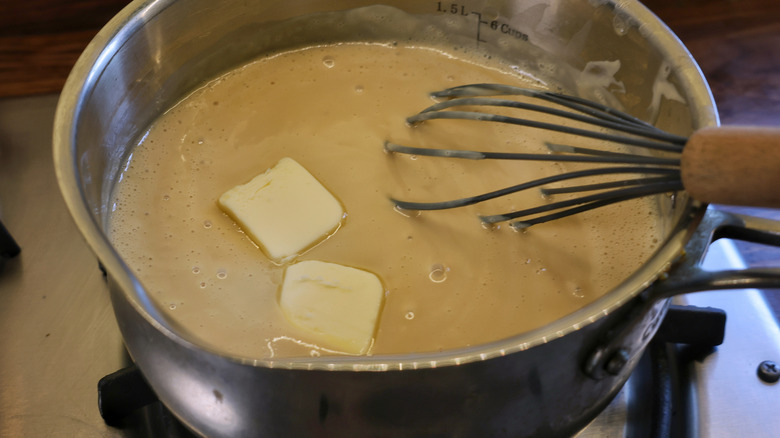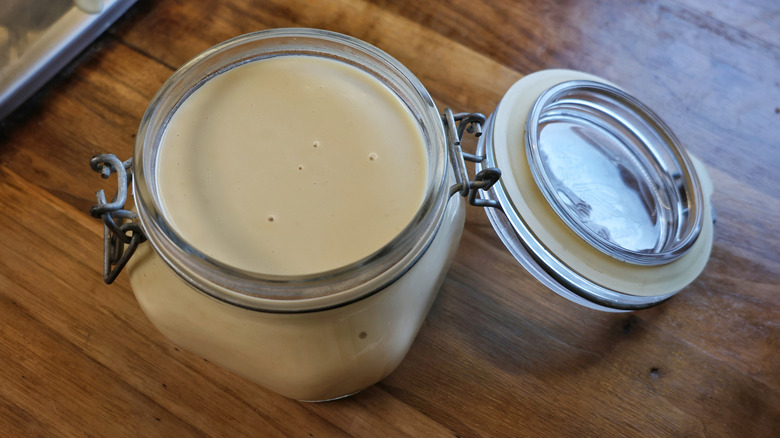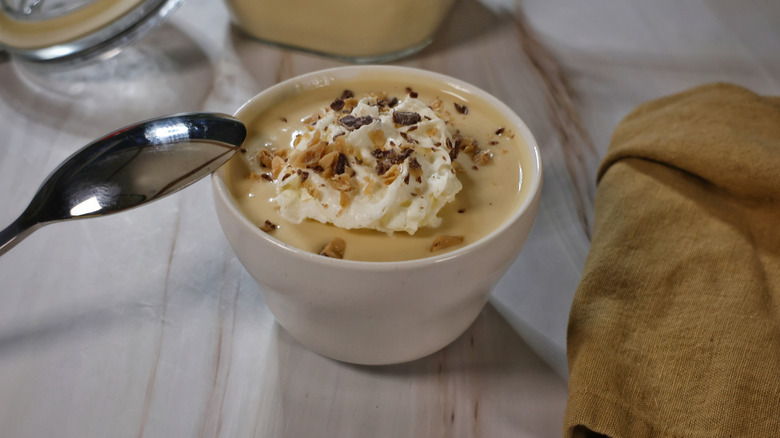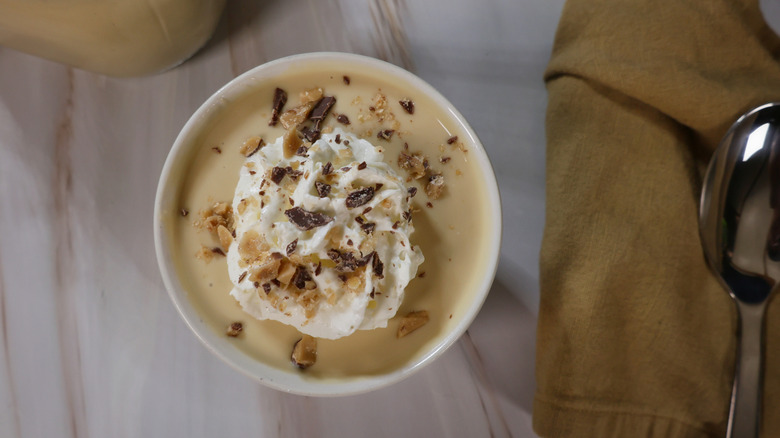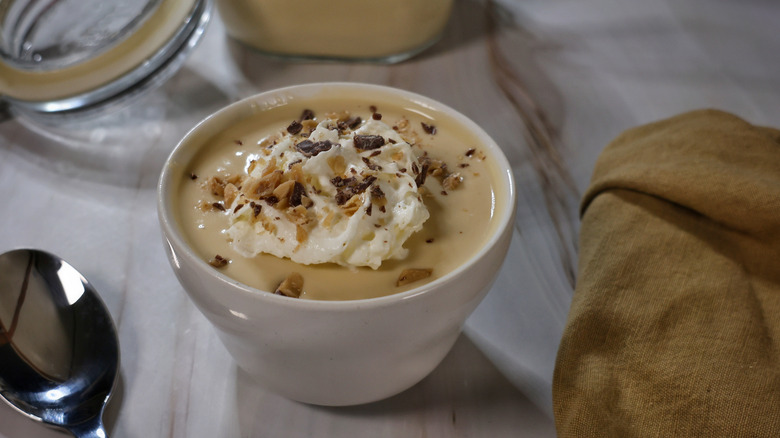Easy Boozy Butterscotch Pudding Recipe
An intriguing take on a classic creamy treat, with a depth of flavor and a surprising twist, this butterscotch pudding is a lovely make-ahead dessert for a grown-up dinner party. Butter and brown sugar combine to give this easy scratch-made pudding a classic butterscotch flavor, while the addition of a few tablespoons of blended Scotch whisky lends it another layer of caramel aromas, a touch of booze, and just a hint of smoke.
Making a quick pudding is an easy way to sort out dessert ahead of time. The majority of the time required for this recipe is simply for the pudding to chill and set in the refrigerator. The actual active cooking time only requires you to whisk a few things together and bring them to the right temperature. Once the starch is cooked and the pudding nicely thickened, you just pop it in the fridge and don't have to think about it again until dinner is done and it's time for something sweet. Despite its ease of preparation and air of childhood nostalgia, this elevated pudding recipe is subtle, sophisticated, and elegant.
Gather the boozy butterscotch pudding ingredients
For this recipe, you will need brown sugar, cornstarch, salt, egg yolks, milk, vanilla extract, and blended Scotch whisky. When you have gathered these ingredients together, you are ready to whip yourself up a delicious dessert.
Step 1: Whisk eggs into dry ingredients
Whisk together the brown sugar, cornstarch, salt, and egg yolks in a mixing bowl until uniform.
Step 2: Add the milk and vanilla
Pour in the milk and vanilla, and whisk until smooth.
Step 3: Transfer to the stove
Transfer the mixture to a saucepan and start over medium-low heat.
Step 4: Cook until thick
Cook, whisking often, until the mixture noticeably thickens. If using a thermometer, this will begin at around 165 F. Remove from heat when pudding reaches 170 F.
Step 5: Whisk in butter and Scotch
Add the butter and Scotch whisky, and stir until the butter melts.
Step 6: Transfer and chill
Transfer to a storage container with a lid and chill in the refrigerator for 2 hours, or until set.
Step 7: Garnish and serve the pudding
Serve cold, garnished with whipped cream and chopped chocolate-covered toffee, if desired.
Easy Boozy Butterscotch Pudding Recipe
Butterscotch pudding may be a nostalgic childhood treat, but our elevated version, with scratch-made pudding and Scotch whisky, is an elegant grown-up dessert.
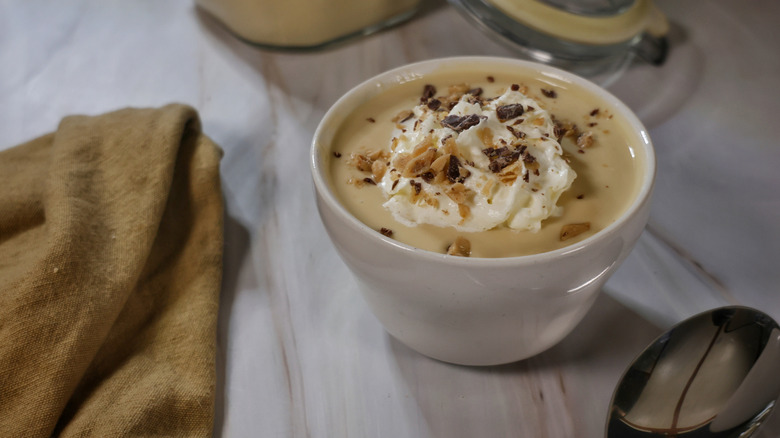
Ingredients
- ½ cup brown sugar
- ¼ cup cornstarch
- ⅛ teaspoon salt
- 4 egg yolks
- 3 cups milk
- ¼ teaspoon vanilla
- 3 tablespoons salted butter
- 3 tablespoons blended Scotch whisky
Optional Ingredients
- Whipped cream, for garnish
- Chopped chocolate-covered toffee, for garnish
Directions
- Whisk together the brown sugar, cornstarch, salt, and egg yolks in a mixing bowl until uniform.
- Pour in the milk and vanilla, and whisk until smooth.
- Transfer the mixture to a saucepan and start over medium-low heat.
- Cook, whisking often, until the mixture noticeably thickens. If using a thermometer, this will begin at around 165 F. Remove from heat when pudding reaches 170 F.
- Add the butter and Scotch whisky, and stir until the butter melts.
- Transfer to a storage container with a lid and chill in the refrigerator for 2 hours, or until set.
- Serve cold, garnished with whipped cream and chopped chocolate-covered toffee, if desired.
Nutrition
| Calories per Serving | 178 |
| Total Fat | 9.1 g |
| Saturated Fat | 5.1 g |
| Trans Fat | 0.2 g |
| Cholesterol | 93.3 mg |
| Total Carbohydrates | 17.2 g |
| Dietary Fiber | 0.0 g |
| Total Sugars | 13.5 g |
| Sodium | 116.2 mg |
| Protein | 4.0 g |
What is the origin of butterscotch?
Particularly when paired with a bit of Scotch whisky, as in this recipe, it may seem likely that butterscotch traditionally has a boozy element to it, but this is not the case. As it turns out, butterscotch is simply a type of candy made with a base of butter and brown sugar. This family of candies may also include caramel and toffee, though they each have their own specific characteristics that make them unique.
Caramel, while sharing some similarities to butterscotch, is essentially just cooked white sugar. As it is heated, the sugar melts and begins to caramelize, creating the trademark brown color and complex bittersweet flavor. Toffee is more similar to butterscotch, as both are made from butter and brown sugar. The key difference between these two is the temperature to which they are cooked. Toffee is cooked to a much higher temperature than butterscotch in order to create its characteristic crisp texture.
The true origins of butterscotch, and particularly the origin of the name, are a bit murky. Butterscotch is generally credited to have been created by Samuel Parkinson in England during the 19th century. When it comes to the name, unfortunately, things are much less clear. Some believe that the "scotch" refers to the process of scorching the sugar, while others think this name points to an alternative origin in Scotland. Of one thing however, we can be certain: Scotch whisky has never been a traditional butterscotch ingredient.
Can I substitute other whisky in this recipe?
For this recipe, we chose a blended Scotch whisky to add boozy depth to our butterscotch pudding. Blended Scotch whisky is widely available, widely enjoyed, and generally on the smoother and milder side. If you consider yourself Scotch-averse, it may be simply that you have sampled the punchier single malt Scotch whiskies, but there are many varieties of Scotch out there, some of which may better suit your palate. Blended Scotch whisky often has notes of caramel, vanilla, and spice, all of which nicely complement a classic butterscotch pudding. But, if you are intent on swapping out the Scotch in this recipe, there are plenty of other options.
Bourbon is another whiskey that would work well in this recipe. Bourbon and Scotch vary in many ways, with one of the most significant differences being the grain bill. Scotch whisky is made using primarily barley, while bourbon must be made using primarily corn. This lends bourbon a sweetness that works well in desserts. Additionally, bourbon must be aged in unused oak casks, which lends the finished product strong vanilla and caramel aromas.
Canadian whisky can also make a suitable substitute for Scotch in this recipe. Canadian whisky is not as restrictive in its production as either bourbon or Scotch and can be made of all sorts of grains, including barley, corn, and rye. Canadian whisky is typically known for its smooth flavor and softer aromas often including oak, spice, and fruit.
